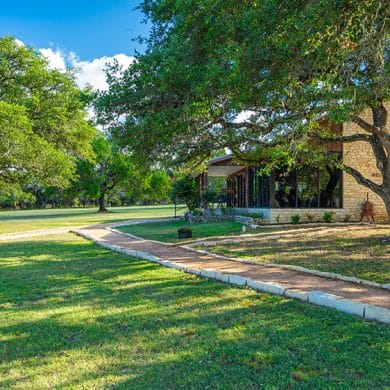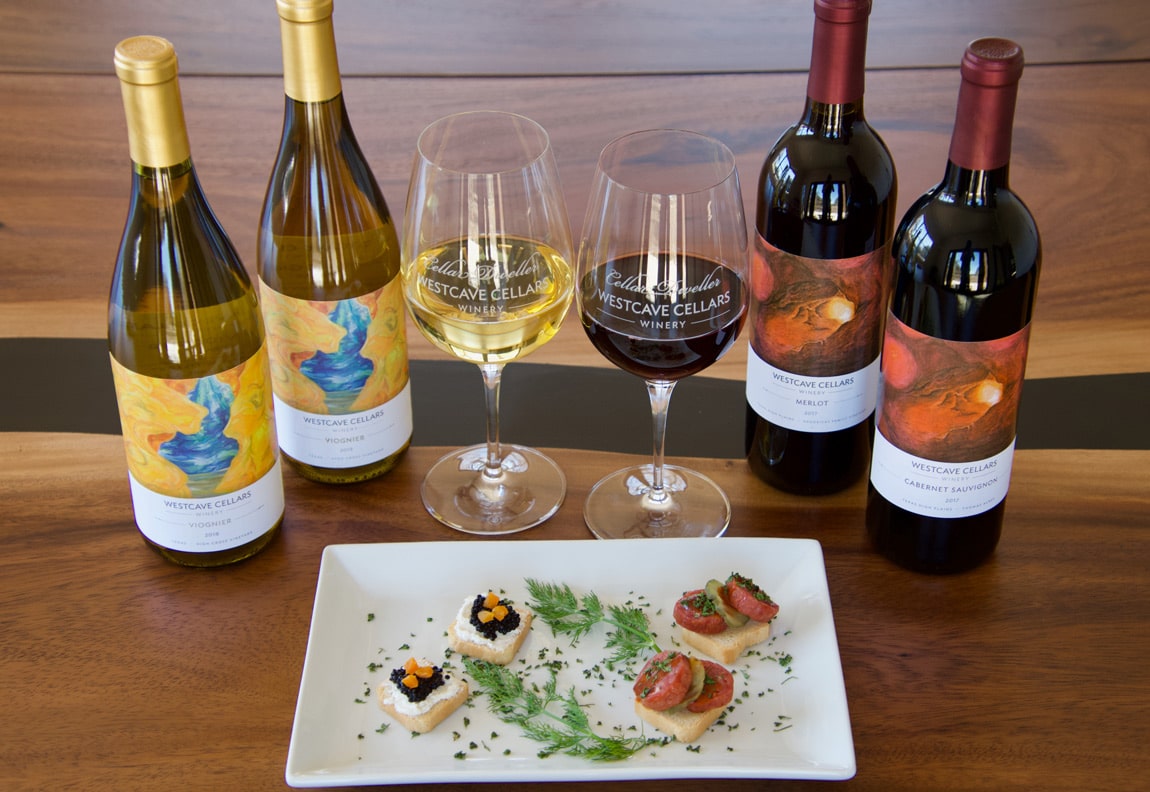
Hosting a wine tasting at home is a convenient and interactive way of learning more about wine at a comfortable and leisurely pace.
Wine tasting groups are definitely not a new concept, and even though we are still open for wine tastings here at Westcave Cellars, the pandemic has indeed taught us the importance of staying home when practical and that much can be accomplished in small groups.
If hosting a wine tasting event for you and your fellow wine lovers is something you have been thinking about, our guide will help you successfully host your very own experience.
Everything discussed below also applies to hosting virtual wine tastings for a socially distanced experience.
What You’ll Need to Host Your Own Wine Tasting
The key ingredients of a successful wine tasting are amazing people and delicious wines!
Keeping the group size limited to 4–6 people is optimal. Including more than two people keeps things lively and interactive, but with more than six people, things can become increasingly difficult to manage.
Having everyone bring a bottle with them is a great plan. This will give your group 4–6 wines to enjoy. It also assists in keeping the event more affordable since every participant contributes wine.
Pick a Theme
It’s best to choose a theme ahead of time. This helps organize the event in advance and assures a better learning experience by narrowing the tasting topic.
You might focus on different wines from the same region or a specific grape variety produced from different regions or countries. Differing wine themes will help keep tastings interesting time and time again.
Pick Tasting Music
Music is the ultimate guide in creating ambiance. In fact, the music selection can completely make or break the experience.
Choose something that sets the tone for the event. Be sure to choose a style and volume that plays in the background so as not to be distracting.
For example, selecting music from the region in which the wines are produced can be a fun way to set the mood for the tasting.
We highly recommend Cortex as they suit the mood well for at-home wine tasting.
How to Serve the Wine
Begin by pouring 2-3 ounces of wine into each glass. This is an optimum amount of wine for sampling, as it gives you enough surface area in which to swirl and inspect the wine. Five or more ounces becomes a glass of wine, which is not quite what we’re going for in a tasting setting.
Pouring the wines into glasses simultaneously and positioning them side by side is the best way to analyze wines. This way, you can move back and forth between the wines if desired.
You might choose to serve the wines with the labels visible so that everyone knows which wines they are tasting.
You can also host a blind tasting by placing the bottles of wine in numbered paper bags before sampling. A blind tasting can enhance each participant’s tasting skill and often leads to a deeper analysis of the favorite wines within the group.
We suggest starting with the former, then moving to blind tasting as you become more advanced at tasting wines.
Using separate wine glasses for each wine can be beneficial. You may also choose to mark each glass to keep track of which is which.
How to Taste the Wine
Now for the fun part… the tasting! How to properly go about sampling wine can be crucial.
We suggest following the rule of the three S’s.
Sight – Smell – Sip.
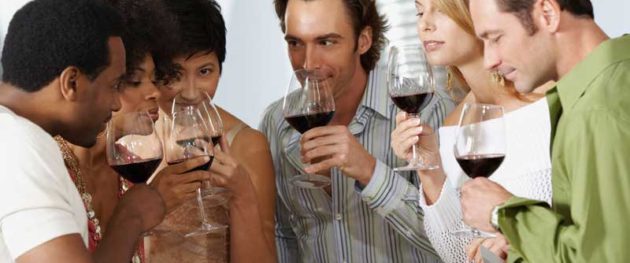
Sight
First, tilt the glass a bit and examine the color of the wine. Is it light, dark? Clear or cloudy?
Visual cues often tell you much about how the wine was produced and how old it might be.
Smell
Vigorously swirl the wine in the glass. This opens up the aromas and allows for a more powerful sensory analysis.
Hold the glass close to your face, with your nose held deeply into the glass. Gently take in the aromas and try to pick out the different nuances that the bouquet is offering.
These could be hints of fruit, leather, flowers, earth, etc.
Sip
Finally, take a sip of the wine and gently swish it over your tongue, covering your whole palate before swallowing.
It can also help to take in a bit of air as you’re coating your palate with the wine to help intensify the perception of the flavors.
Recommended Wines From Westcave Cellars Winery & Brewery
We highly suggest the following wines for your at-home wine tasting experience.
2018 Viognier (High Cross Vineyards) & 2019 Viognier (High Cross Vineyards)
This selection of wines plays off the theme of vintage differences. The 2018 and 2019 Viognier both come from the same vineyard, and the subtle differences in the two vintages are a great topic of discussion.
2017 High Plains Cabernet Sauvignon (Thomas Acres Vineyard) & 2017 Merlot (Hendricks Family Vineyard)
The 2017 High Plains Cabernet Sauvignon and the 2017 Merlot showcase two different grape varieties and focus on the theme of regionality. Both are grown in the Texas High Plains AVA.
Become a Cellar Dweller!
Join our Wine Club and enjoy 4 or 6 bottles of finely crafted Westcave Cellars wines 4 times each year (March, June, September, December).
Food Pairings
After sampling the wines on their own, take your tasting game to the next level by introducing a food that compliments each wine.
How to Taste Wine With Food
First, sip a wine and let it coat the tongue and cheeks. Then, take a bite of the paired food. Once the food clears the mouth, sample the wine again.
The structural changes in both the food and wine add an interesting dimension to a home wine tasting and add further to the discussion.
Recommended Wine and Food Pairings
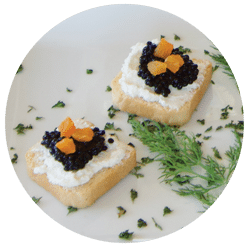
2018 & 2019 High Cross Viognier
Pairing: Trois Petits Cochons Petits Toasts with a smear of La Bonne Vie Chante cheese spread with horseradish, topped with Caviart Black Seaweed Pearls and three pieces of diced dried apricots.
The structure of the wines will change on your palate, with the acidity becoming softer, and the mouthfeel becoming denser due to the cheese. The seaweed pearls (faux caviar) act to remove any perceived sweetness of these two floral and very aromatic dry white wines.
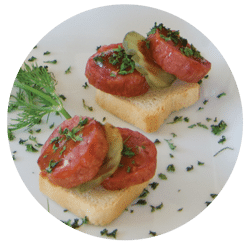
2017 High Plains Cabernet Sauvignon & 2017 Merlot
Pairing: Trois Petits Cochons Petits Toasts with Opa’s smoked sausage, topped with a dill pickle slice and a dollop of Stubb’s original bbq sauce.
The structure of both red wines will change, with the acidity becoming a tad smoother, and the tannins from each wine softening on the palate. The fat from the sausage will cut the perceived tannic structure of each wine, and the pairing as a whole adds in a new dimension of sensory fun.
Other Helpful Hints
– Since some guests will drive home after the tasting, it is important to remember to drink responsibly. Limiting alcohol intake by expectorating (spitting into a dump bucket or plastic cup) and drinking plenty of water throughout the tasting are just a few ways to help limit alcohol intake.
– Palate cleansers such as plain crackers and water are great ways to refresh the palate between wines. Avoid foods or crackers that have added flavors, as these can distract from the wine analysis.
– Talking out loud to express your thoughts on each wine not only serves to help the whole group communicate their own perceptions, but it assists in each person becoming more confident in their tasting abilities by sharing those thoughts and feelings with others. It’s sort of like speaking in front of large groups. At first, it may seem terrifying, but after describing a wine’s aromas and flavors several times, it will become routine.
We hope this outline has encouraged you to organize a tasting experience of your own at home. What a fun way to spend time in a small group setting, while sharing the love of wine and expanding your wine knowledge in general!
Cheers!

